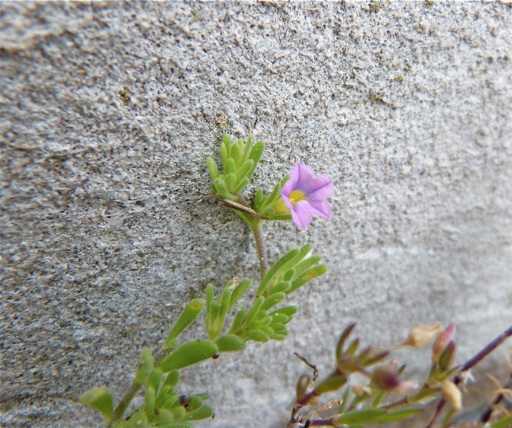Map Snapshot



19 Records
Status
"Naturalized from tropical America; Florida to southern California, north to Virginia and Maryland, and casually to southern New York" (Reed, 1964).
Seasonality Snapshot
Source: Wikipedia
| Calibrachoa parviflora | |
|---|---|

| |
| Scientific classification | |
| Kingdom: | Plantae |
| Clade: | Tracheophytes |
| Clade: | Angiosperms |
| Clade: | Eudicots |
| Clade: | Asterids |
| Order: | Solanales |
| Family: | Solanaceae |
| Genus: | Calibrachoa |
| Species: | C. parviflora
|
| Binomial name | |
| Calibrachoa parviflora (Juss.) D'Arcy
| |
| Synonyms[1] | |
| |
Calibrachoa parviflora is a species of flowering plant in the nightshade family known by the common name seaside petunia. It is native to much of southeastern South America, Mexico, and the southwestern United States, and it is present as an introduced species in other sections of the Americas, such as the southeastern United States, as well as in Australia, where it is an occasional weed in New South Wales. This herb produces slender, branching stems which creep along the ground and root at nodes. The upright branches are leafy, with fleshy, glandular, oblong or widely lance-shaped leaves. The herbage may be sticky in texture. Flowers occur in the leaf axils along the stems. Each is under a centimeter wide, its funnel- or bell-shaped corolla five-lobed and purple in color, with a paler tubular throat. The fruit is a capsule just a few millimeters wide.
References
[edit]- ^ "The Plant List: A Working List of All Plant Species". Retrieved 13 September 2015.
External links
[edit]
